Abstract
Pigeons chose between two alternatives that differed in the probability of reinforcement and the delay to reinforcement. A peck on the red key always produced a delay of 5 s and then a possible reinforcer. The probability of reinforcement for responding on this key varied from .05 to 1.0 in different conditions. A response on the green key produced a delay of adjustable duration and then a possible reinforcer, with the probability of reinforcement ranging from .25 to 1.0 in different conditions. The green-key delay was increased or decreased many times per session, depending on a subject's previous choices. The purpose of these adjustments was to estimate an indifference point, or a delay that resulted in a subject's choosing each alternative about equally often. In conditions where the probability of reinforcement was five times higher on the green key, the green-key delay averaged about 12 s at the indifference point. In conditions where the probability of reinforcement was twice as high on the green key, the green-key delay at the indifference point was about 8 s with high probabilities and about 6 s with low probabilities. An analysis based on these results and those from studies on delay of reinforcement suggests that pigeons' choices are relatively insensitive to variations in the probability of reinforcement between .2 and 1.0, but quite sensitive to variations in probability between .2 and 0.
Full text
PDF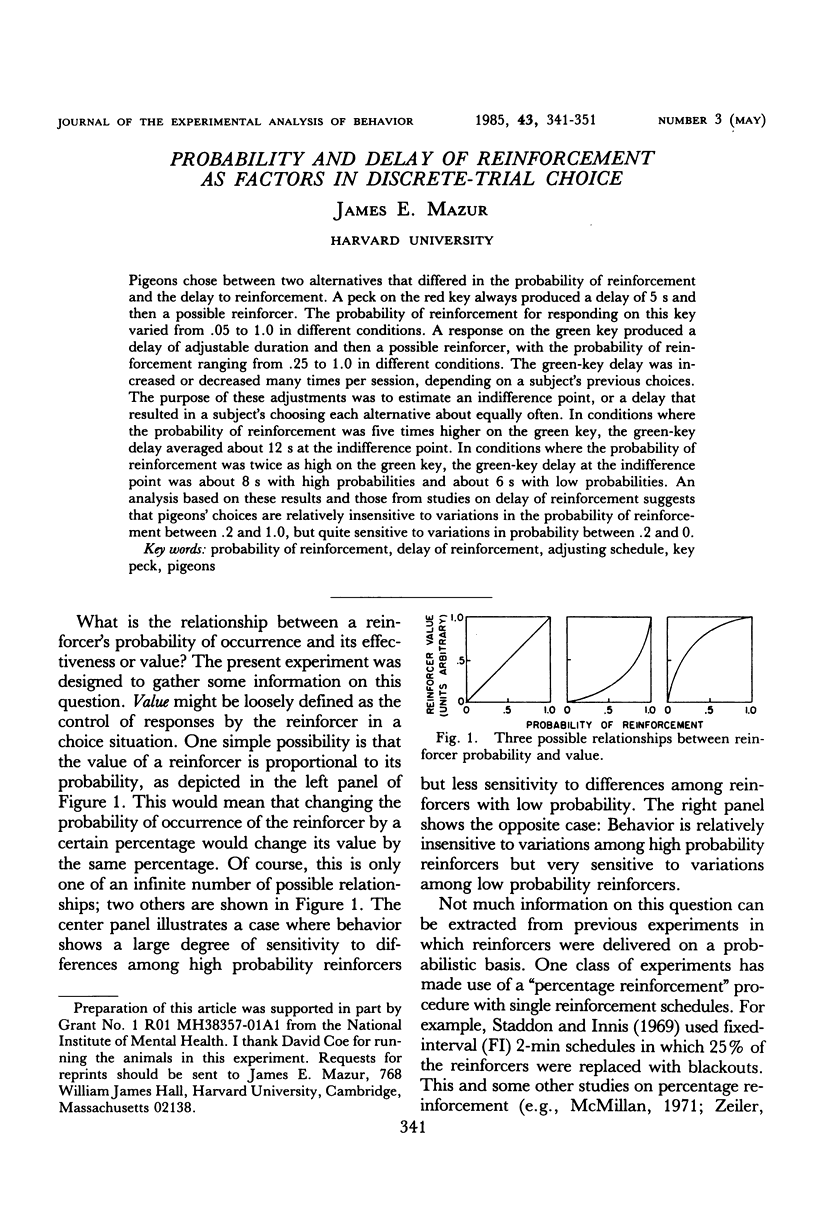
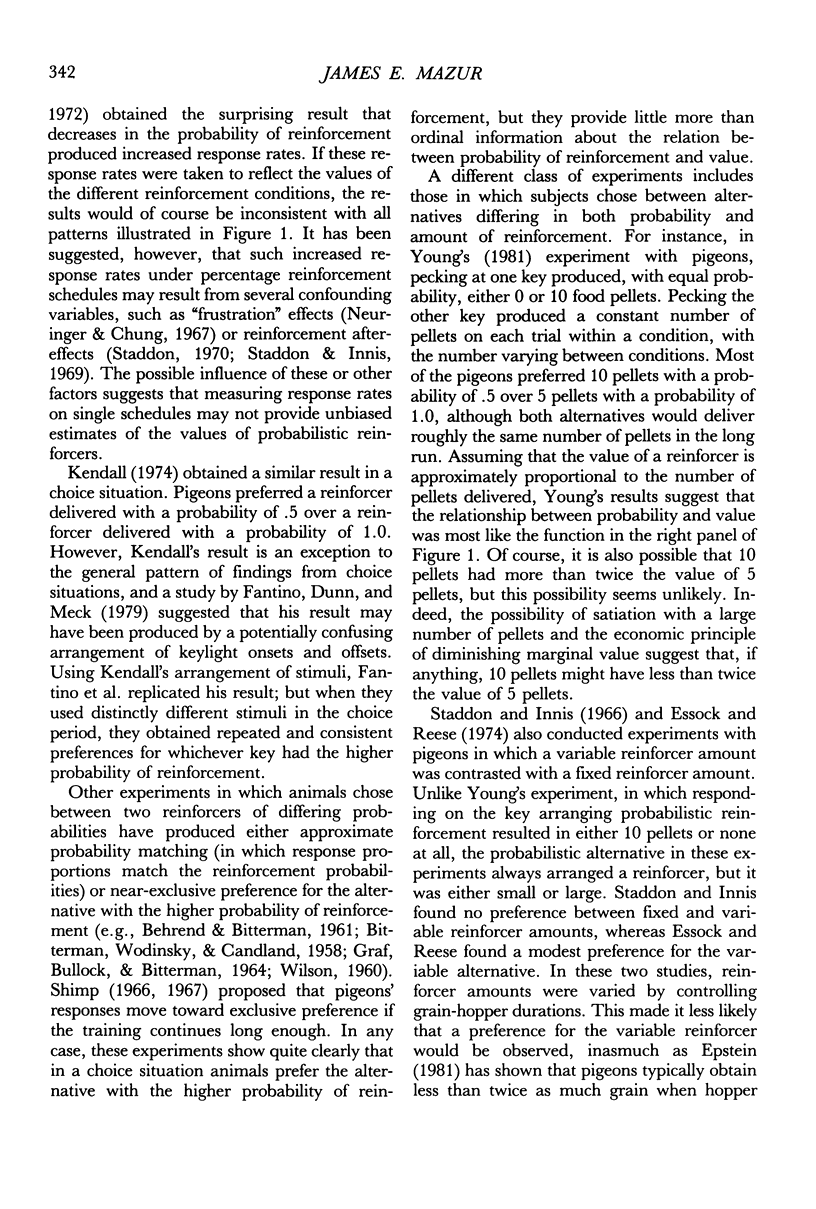
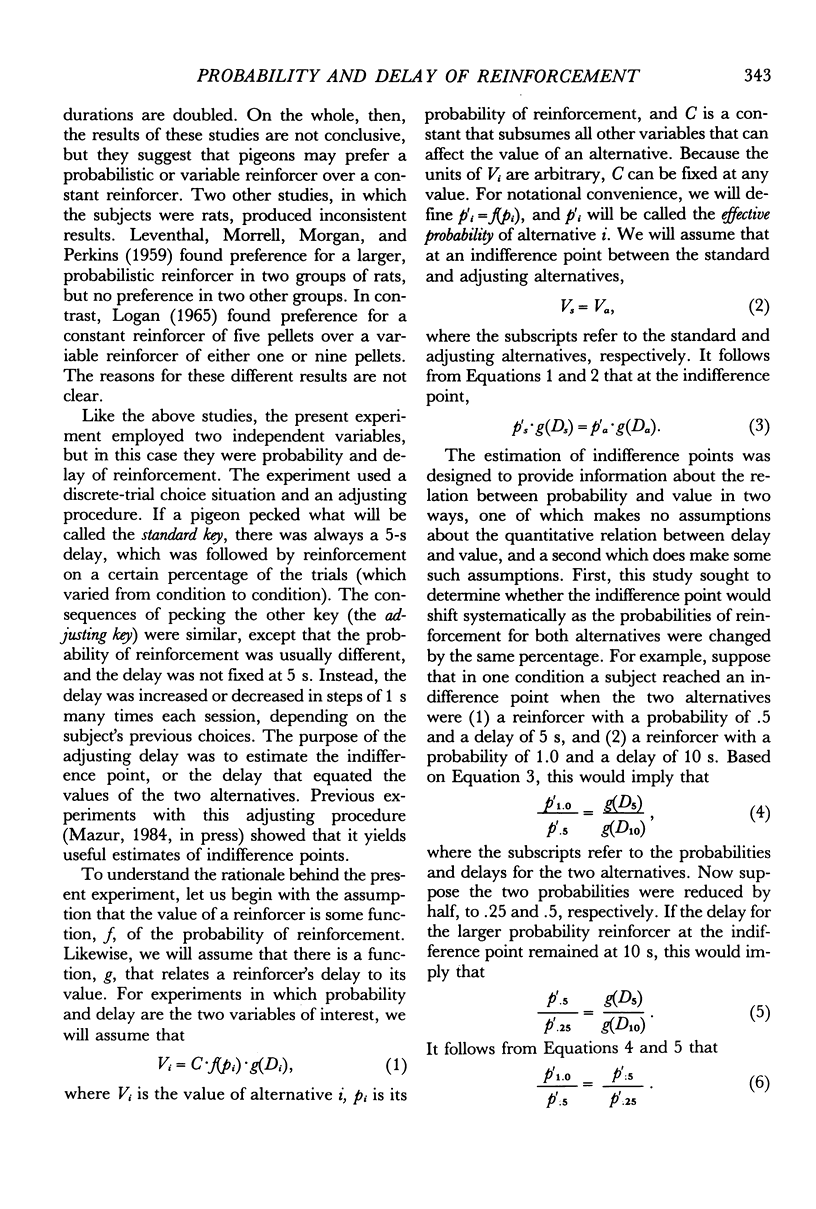
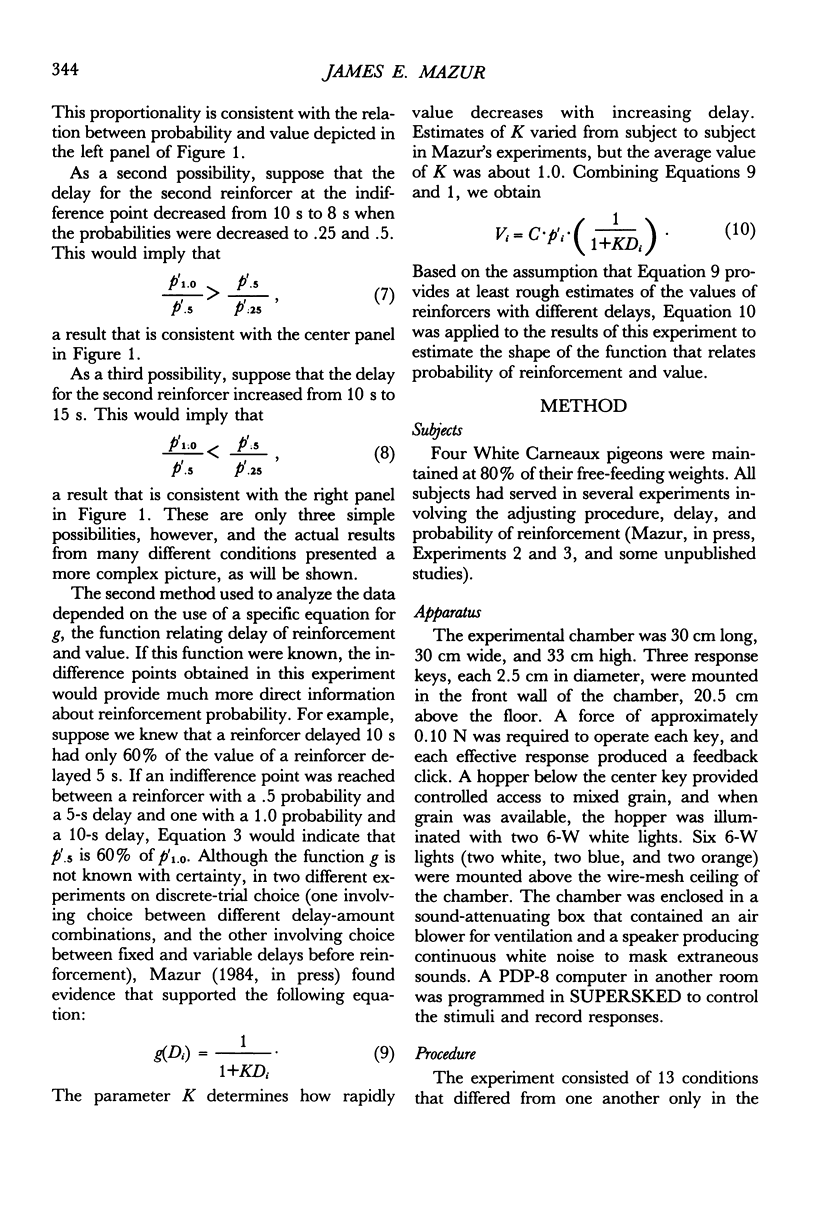


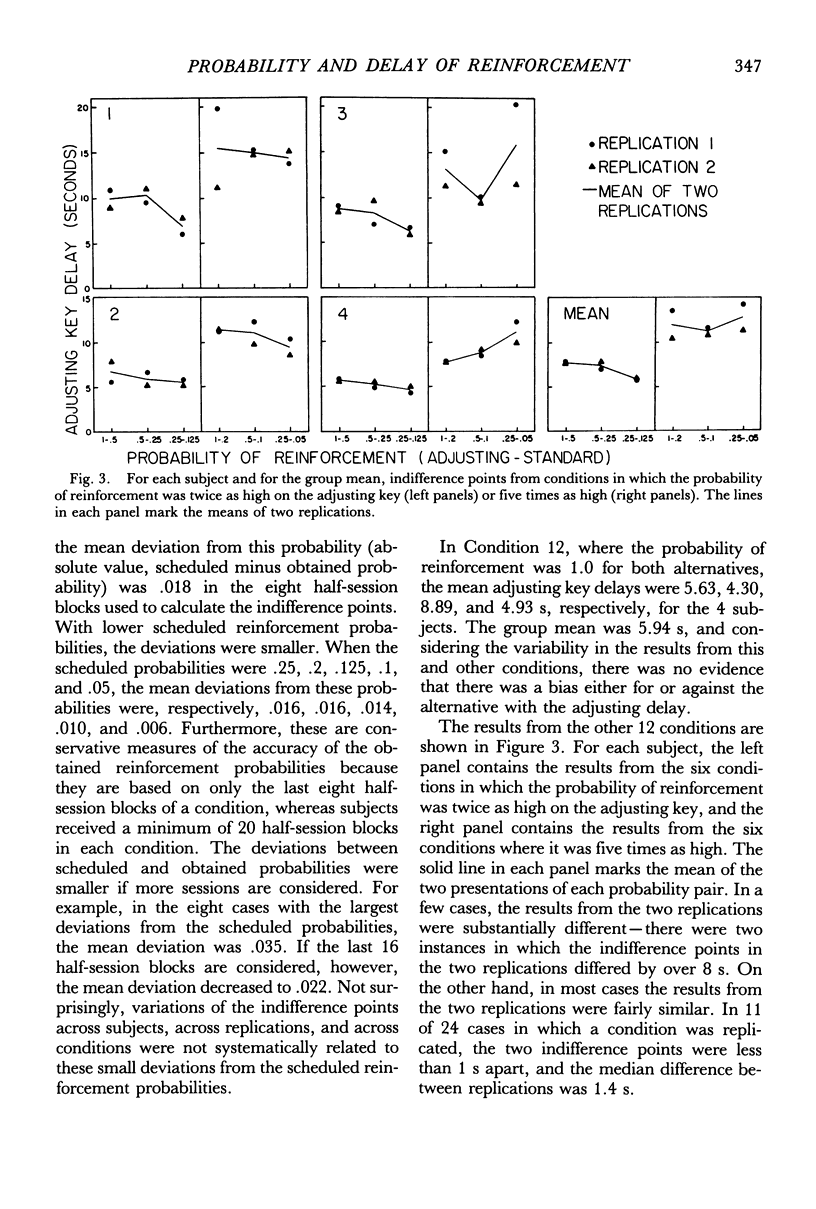
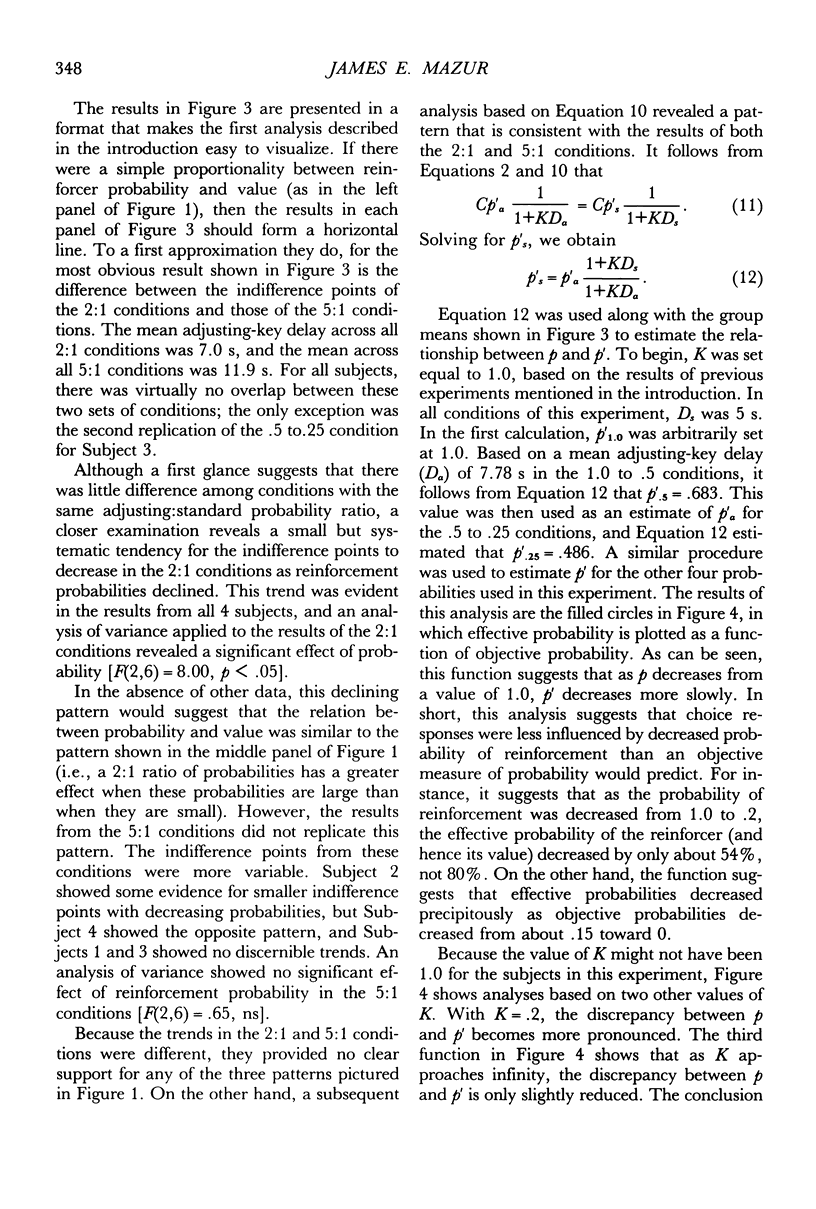

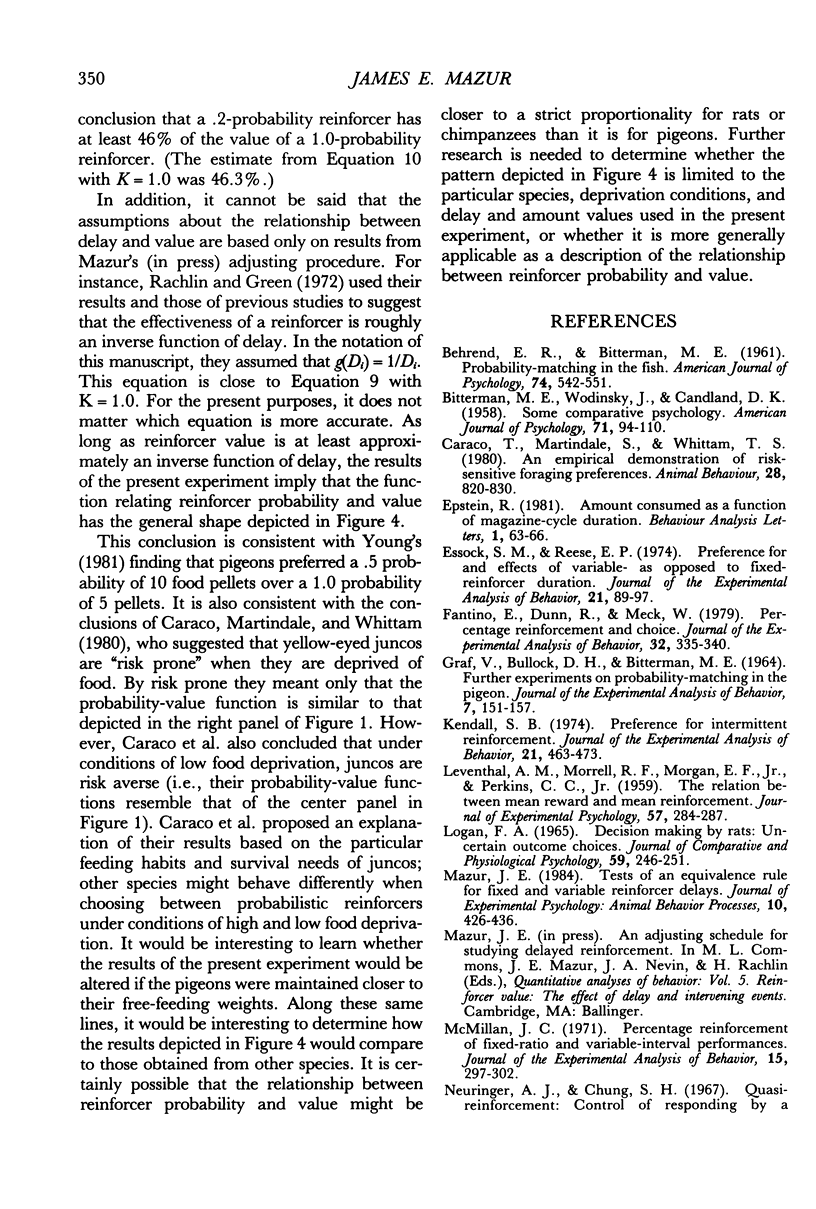

Selected References
These references are in PubMed. This may not be the complete list of references from this article.
- BITTERMAN M. E., WODINSKY J., CANDLAND D. K. Some comparative psychology. Am J Psychol. 1958 Mar;71(1):94–110. [PubMed] [Google Scholar]
- Essock S. M., Reese E. P. Preference for and effects of variable-as opposed to fixed-reinforcer duration. J Exp Anal Behav. 1974 Jan;21(1):89–97. doi: 10.1901/jeab.1974.21-89. [DOI] [PMC free article] [PubMed] [Google Scholar]
- Fantino E., Dunn R., Meck W. Percentage reinforcement and choice. J Exp Anal Behav. 1979 Nov;32(3):335–340. doi: 10.1901/jeab.1979.32-335. [DOI] [PMC free article] [PubMed] [Google Scholar]
- GRAF V., BULLOCK D. H., BITTERMAN M. E. FURTHER EXPERIMENTS ON PROBABILITY-MATCHING IN THE PIGEON. J Exp Anal Behav. 1964 Mar;7:151–157. doi: 10.1901/jeab.1964.7-151. [DOI] [PMC free article] [PubMed] [Google Scholar]
- Kendall S. B. Preference for intermittent reinforcement. J Exp Anal Behav. 1974 May;21(3):463–473. doi: 10.1901/jeab.1974.21-463. [DOI] [PMC free article] [PubMed] [Google Scholar]
- LEVENTHAL A. M., MORRELL R. F., MORGAN E. F., Jr, PERKINS C. C., Jr The relation between mean reward and mean reinforcement. J Exp Psychol. 1959 May;57(5):284–287. doi: 10.1037/h0044878. [DOI] [PubMed] [Google Scholar]
- LOGAN F. A. DECISION MAKING BY RATS: UNCERTAIN OUTCOME CHOICES. J Comp Physiol Psychol. 1965 Apr;59:246–251. doi: 10.1037/h0021850. [DOI] [PubMed] [Google Scholar]
- McMillan J. C. Percentage reinforcement of fixed-ratio and variable-interval performances. J Exp Anal Behav. 1971 May;15(3):297–302. doi: 10.1901/jeab.1971.15-297. [DOI] [PMC free article] [PubMed] [Google Scholar]
- Neuringer A. J., Chung S. H. Quasi-reinforcement: control of responding by a percentage-reinforcement schedule. J Exp Anal Behav. 1967 Jan;10(1):45–54. doi: 10.1901/jeab.1967.10-45. [DOI] [PMC free article] [PubMed] [Google Scholar]
- Rachlin H., Green L. Commitment, choice and self-control. J Exp Anal Behav. 1972 Jan;17(1):15–22. doi: 10.1901/jeab.1972.17-15. [DOI] [PMC free article] [PubMed] [Google Scholar]
- Shimp C. P. Probabilistically reinforced choice behavior in pigeons. J Exp Anal Behav. 1966 Jul;9(4):443–455. doi: 10.1901/jeab.1966.9-443. [DOI] [PMC free article] [PubMed] [Google Scholar]
- Shimp C. P. Reinforcement of least-frequent sequences of choices. J Exp Anal Behav. 1967 Jan;10(1):57–65. doi: 10.1901/jeab.1967.10-57. [DOI] [PMC free article] [PubMed] [Google Scholar]
- Staddon J. E., Innis N. K. Reinforcement omission on fixed-interval schedules. J Exp Anal Behav. 1969 Sep;12(5):689–700. doi: 10.1901/jeab.1969.12-689. [DOI] [PMC free article] [PubMed] [Google Scholar]
- Young J. S. Discrete-trial choice in pigeons: Effects of reinforcer magnitude. J Exp Anal Behav. 1981 Jan;35(1):23–29. doi: 10.1901/jeab.1981.35-23. [DOI] [PMC free article] [PubMed] [Google Scholar]
- Zeiler M. D. Fixed-interval behavior: effects of percentage reinforcement. J Exp Anal Behav. 1972 Mar;17(2):177–189. doi: 10.1901/jeab.1972.17-177. [DOI] [PMC free article] [PubMed] [Google Scholar]


